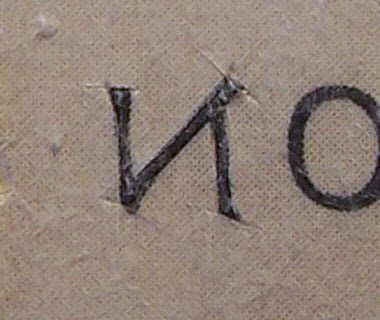
I claim no 'credit' at all for the work you have produced, but it is very satisfying indeed to see that some of the various seeds that I have scattered around have - in your case - fallen on very fertile ground, and have helped (even just a little bit) in the creation of such interesting and beautiful work. But very few indeed press on with this to the extent that you have, with your very intense and detailed activities. A very few of them then go on and make 'another' one. Many people give it a try and make 'a' print. and you are one of the best examples! You've got it bad too, obviously! You say 'infectious enthusiasm', and I think that's an appropriate phrase - because I do see other people becoming 'infected' with this bug. Perhaps one day we'll meet in person.Īnnie, thank you very much for the kind comments, (and for helping bring more people to watch the program). Congratulations to David on this wonderful NHK portrait of his life and work. In many ways David is a bridge between this exquisite but declining Japanese art form and artists in the West who are deeply interested in learning it. Whether by facilitating contact between western artists and Japanese suppliers via the Baren Mall, where one can buy supplies directly from Japan, or producing an e-book called Your First Print, a "highly practical and focussed guidebook that will take you - step by step - completely through the process of creating your first print," David conducts all these activities on top of the hours and hours he spends producing his own superb and finely crafted work. I believe it's this enthusiasm that gives David the energy to reach out over and over again to other printmakers around the world to share what he knows. Notice it when you watch the video above - David Bull loves Japanese woodblock and he has a deep desire to preserve this ancient craft in the midst of a rapid decline in trained printers and carvers and the accompanying decline in suppliers of wood, washi and tools.
#David bull moku hanga series#
“Tokyo-based woodblock printmaker David Bull narrates a video showing the step-by-step process of making one of the woodblock prints in the 2019 subscription series ‘A Japan Journey’, designed by Jed Henry.In addition to technology, the other ingredient that makes my relationship with this printmaker on the other side of the world possible is David's own infectious enthusiasm. Woodblock Printing Process – A Japan Journey “Local printmaker Jennifer Worsley demonstrates the Japanese woodblock printmaking process, also known as moku hanga, using a mix of traditional and contemporary techniques and tools.”Ģ. (Picture source: )įor a better understanding the following YouTube videos show the fascinating process of Japanese woodblock printing: 1860, from the chapters 4, 5 of Legends of the Dog Warriors. It was also used later for the ukiyo-e, which became famous in the Edo era, and are therefore known as Edo-e 江戸絵.ĭrawings (hanshita-e) for a three-volume picture book from Hokusai Katsushika (1760-1849). The style was made popular by the artist Suzuki Harunobu (鈴木 春信 1725-1770). This woodblock-printing technique was established in the 1760s in Japan.Usually painter and printer discuss the printing order. These woodcuts are now used as printing-plates one after another.These are also handed over to a carver, who produces several woodcuts accordingly. The painter produces more different hanshita-e for each color.

Most commonly cherry wood is used in Japan.


Wood carvers are working in the back at small tables. On the left we see the painter with different colors and brushes. This picture, a woodblock print itself, was made by Utagawa Kunisada (歌川 国貞 1786–1865) in 1857. This triptych presents seven women working at different workstations showing the process of woodblock printmaking, although women were not typically working as artists or crafters in the Edo era.


 0 kommentar(er)
0 kommentar(er)
